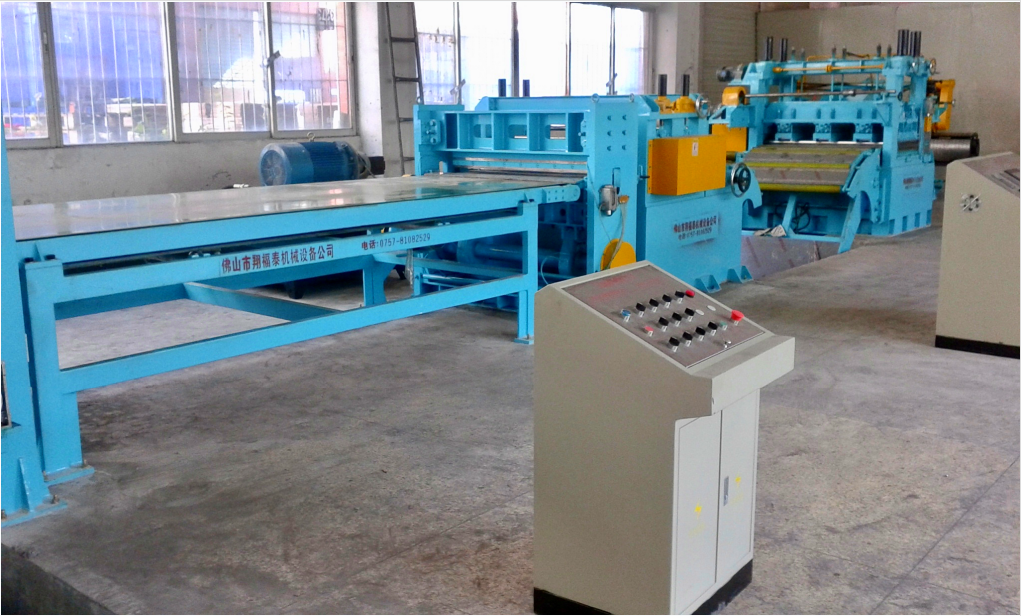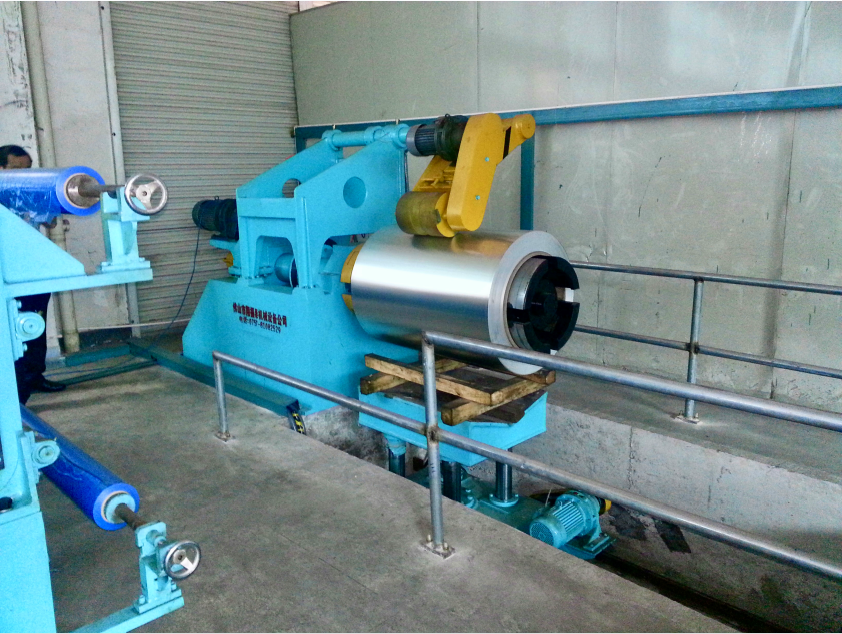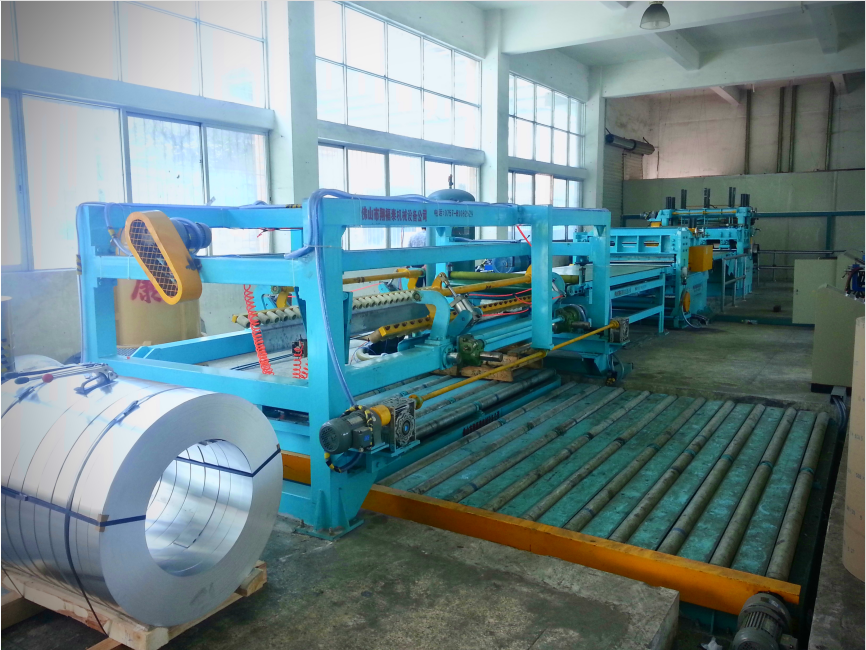How Leveling and Cross Cutting Lines DeliverAccurate Cuts in Metal Processing?
You can watch metal coils become flat sheets with leveling and cross cutting lines in metal coil processing. These systems use smart controls, like PLCs and real-time sensors. They help measure and fix the flatness and length. Flatness and stress relief are important because they stop problems and make the sheets easy to use. Modern lines can handle coils up to 50 tons. They cut with leveling precision as close as ±1.5 mm/m. Automated steps like uncoiling, leveling, cutting, stacking, and packaging work together for great results.
Key Takeaways
Leveling and cross cutting lines change big metal coils into flat sheets. They take out bends and stress to make the sheets smooth. Advanced tools like sensors and laser cutters help keep cuts exact. Automation makes the work faster and more accurate. Straightening and leveling steps fix shape problems. These steps also help use less material and save money. Cross cutting machines cut sheets to the right length. This makes sure every piece is the correct size. Stacking and packaging keep the sheets safe from damage. They help the sheets stay flat and safe when shipped.

Leveling and Cross Cutting Lines
Leveling and Cross Cutting Lines in Metal Coil Processing
Purpose and Function
When you use leveling and cross cutting lines in metal coil processing, you turn heavy metal coils into flat, accurate sheets. You need these sheets to be flat and stress-free so they work well in cars, electronics, and buildings. Each step in the process helps you get the right shape and size. For example, uncoiling and leveling remove bends and stress from the metal. Cross cutting gives you sheets with exact lengths.
You can see how important quality control is. Special sensors and electromagnetic methods help you track each sheet. These tools let you predict how the metal will behave when you form it. You can avoid cracks and wrinkles, which means less waste and lower costs. In factories, you use these lines to make sure every sheet meets strict standards. This helps you save money and keep your products strong and safe.
Tip: If you want to make sure your metal sheets are always the right size and shape, you should use leveling and cross cutting lines in metal coil processing. This process helps you get the best results every time.
Key Technologies
You use many advanced tools in leveling and cross cutting lines in metal coil processing. These tools help you cut metal with high accuracy and speed. Here is a table that shows what these lines can do:
You can also see how coil weight changes in different models:

Some of the most important technologies you use include:
- Laser cutting, waterjet cutting, and plasma cutting for precise shapes and sizes.
- Automated systems like robotic welding and CNC machines to reduce mistakes and speed up work.
- CAD/CAM software to plan and control every cut.
- Sensors and real-time controls to check quality and keep every sheet within tight limits.
You can also use smart features and automation to make your work faster and more reliable. These technologies help you meet the needs of industries like automotive, aerospace, and electronics. You get better results, save energy, and keep your production running smoothly.
Process Steps
Uncoiling and Straightening
First, you uncoil the metal from a big reel. The metal strip goes into the line. When the coil unwinds, it can have bends and twists. Straightening machines help fix these problems. The metal moves over many rolls that bend it back and forth. This action stretches and squeezes the metal’s surfaces. It removes stress and fixes shape problems like coil set, crossbow, and waves. Studies show precision levelers can fix up to 80% of these issues. Advanced machines use sensors to check roller positions and forces. They change settings right away to keep the metal flat and steady. This step makes the metal flatter and easier to use later. You also get better strength and fewer problems with shaping.
Note: Good uncoiling and straightening stop defects that waste metal or slow your work.
Leveling for Flatness
After straightening, the metal goes to the leveling section. Here, you use smaller rolls and pull the strip tight. The goal is to make the sheet very flat. You want to get rid of waves, buckles, or fluting. Leveling also takes away inside stress, so the metal keeps its shape. You check how well this works by looking at flatness and size. You can get flatness as close as 0.1 to 0.5 mm per meter. Sensors and real-time controls help you keep these tight limits. Good leveling can lower scrap by up to 20%. You save raw materials and get 15-25% more usable sheets. This means less waste and more good sheets.
- After leveling, you check flatness and size.
- Multi-point leveling uses rollers you can adjust for better pressure.
- Tension and compression forces remove stress and fix shape problems.
You see fewer defects like ripples and edge waves. More sheets pass quality checks, and you avoid delays in later steps.
Cross Cutting for Precision
When the sheet is flat, you cut it to the right length. Cross cutting uses sharp blades or shears to slice the metal. You set the length, and the machine cuts each sheet just right. This step is important because every sheet must match your order. You use leveling and cross cutting lines in metal coil processing to get sheets with tight length limits. Modern machines can cut as close as ±1.5 mm per meter. Automation and sensors help keep every cut correct, even when working fast. You can also use laser or plasma cutters for special shapes or tighter limits.
Tip: Good cross cutting means you fix fewer mistakes and make better products.
Stacking and Packaging
After cutting, you stack the sheets in neat piles. Conveyors, capstan arms, and stackers help move and organize the sheets. You weigh each stack and check the size to match your order. You wrap and strap the stacks to keep them safe during shipping. Good stacking and packaging keep sheets flat and stop damage. You use edge protectors, stretch film, and VCI paper to stop scratches and rust. Automated systems center the coils and control tension while wrapping. This lowers the chance of bending and keeps sheets in great shape.
- Measuring coil size helps fit protectors the right way.
- Strong strapping and careful handling stop dents and scratches.
- Compression, drop, and vibration tests make sure packaging protects the sheets.
You need these steps to keep your metal sheets accurate and high quality from the factory to the customer. Every part, from uncoiling to packaging, works together to give you flat, precise, and safe sheets.
Remember: Each step in leveling and cross cutting lines in metal coil processing helps make your sheets more accurate, flat, and high quality.

Decoiler
Components and Accuracy
Roller Levelers and Tension Leveling
You use roller levelers and tension leveling to keep metal sheets flat. Roller levelers have rollers that bend the metal back and forth. This helps remove stress and fixes waves, camber, and coil set. Tension levelers stretch the metal in three ways. They pull it up and down, side to side, and along its length. This stops the metal from going back to its old shape. It also helps stop wrinkles. You can see how each roll works in the table below:
Modern machines have special features. They use hydraulic roll changers and spray cleaners. These make it easy to keep the machine clean and working well. Some tension levelers can turn off to stop scratches when not needed. You also save energy and can change rollers fast. This helps you work with more metal and waste less time.
Cross Cutting Shears
Cross cutting shears help make sure every sheet is the right size. You want shears that last long and cut well. Makers test these tools for how hard and tough they are. Modular shears are very hard, about 52–56 HRC, and last 522–528 hours per edge. Regular shears last about 266–268 hours. This means modular shears last more than twice as long. Engineers use special tests to check how fast tools wear out. They also look at tool shape and heat control to keep cuts sharp. You can count on these shears for good results in leveling and cross cutting lines in metal coil processing.
Tip: Using modular shears can help you save money and work faster.
Control and Automation
You use advanced control and automation to keep your work accurate. You also use strong software to control speed, force, and tension. These systems help keep metal flat and cuts exact. Real-time data lets you find problems fast and fix them. Smart controls and models help you get the best results. You can trust leveling and cross cutting lines in metal coil processing to give you high-quality sheets with these tools.

Cut to Length Line
Benefits and Quality
Precision and Consistency
You want every metal sheet to be just right. Leveling and cross cutting lines help you do this. These systems use automation and smart controls. They make sure each step is done the same way every time. You know every sheet will have the correct size and shape.
You also use detailed CAD designs and clear drawings. These tools help you avoid mistakes and keep your work steady. Layer management and dimensioning show where to cut and bend. Material selection and stress analysis keep your sheets strong. You can review your work and get feedback before you start making sheets. Quality checks during and after processing help you find problems early.
Tip: Doing things the same way and planning well gives you great results every time.
Efficiency and Productivity
Modern metal processing lines help you work faster and smarter. You can make thousands of sheets each week. With a cycle time of about 15 seconds per part, you can make almost 10,000 parts in a week. These lines run at about 85% efficiency, so you use your time well. Buffers between machines keep the line moving, even if one part slows down.
You can also work better by making setup times shorter. Flexible lines let you switch jobs quickly. This helps when you need to make small batches for different customers. Better organization and smart controls keep the line running smoothly.
- Shorter setup times mean less waiting.
- Buffers help you make more sheets.
- High availability keeps your line working.
Overcoming Challenges
You face many problems in metal processing, like coil set, camber, and burrs. Leveling and cross cutting lines help you fix these problems. Roller levelers remove waves and coil set. Tension leveling fixes camber and keeps sheets flat. Sharp shears and real-time sensors lower burrs and find defects early.
Remember: Modern systems help you solve problems and give your customers better products.
Leveling and cross cutting lines help you make metal sheets flat and strong. These systems use automation to help you work faster and safer. You also waste less metal when you use these machines. The table below shows the main benefits you get:
New technology keeps making metal processing better each year. Soon, you will see even faster, safer, and higher quality results.
FAQ
What is the main purpose of leveling in metal processing?
Leveling helps you make metal sheets flat. You remove bends, waves, and stress. Flat sheets work better in machines and products. You get higher quality and fewer problems.
How do cross cutting lines improve accuracy?
Cross cutting lines let you cut metal sheets to exact lengths. You set the size, and the machine cuts each sheet the same way. This helps you meet strict size requirements for your projects.
What types of metals can you process with these lines?
You can process many metals, such as:
You can use these lines for both thin and thick metal coils.
How does automation help in metal processing?
Automation lets you control machines with computers and sensors. You get faster work, fewer mistakes, and safer conditions. You can track every sheet and fix problems quickly.

